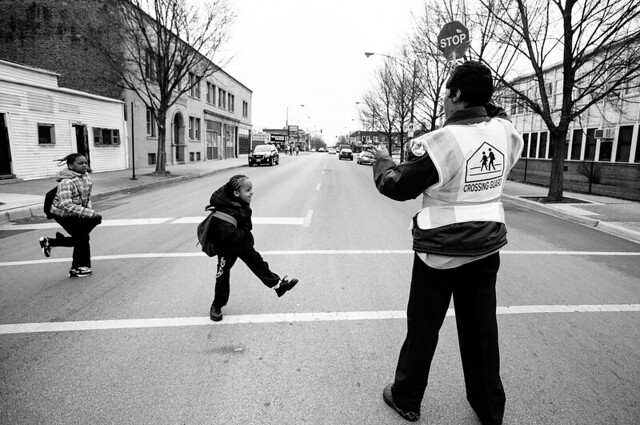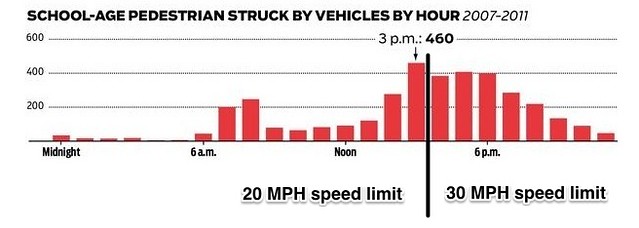
Today in the Tribune, reporter Hal Dardick implied that Chicagoans should be outraged because, despite Rahm Emanuel's promise that money generated by speed cameras will be invested in traffic safety and violence prevention programs for kids, he hasn't created a separate "children's fund" in the proposed city budget. Dardick notes that any revenue generated by the cams will go into the city's general fund. The newspaper is using this relatively minor budget issue to fuel criticism that speed camera program isn't about safety but revenue. While the Trib has done more data analysis on speeding in Chicago than any other publication, the Trib too often skirts the fact that, around the world, the cameras have been proven to reduce speeding and traffic casualties.
Emanuel could have been more specific about how the speed cam revenue would be budgeted, but the basic fact is that the city will spend those revenues the way he said it would -- on programs to increase children's safety and well-being. The revenue from drivers who exceed the speed limit by 10 mph or more in the speed camera zones will still be used to pay for crossing guards and police officers around schools and infrastructure like crosswalks and warning signs, plus after-school, anti-violence and job-training programs.
In fact, Illinois state law requires it. The state speed camera legislation requires the city to use speed camera revenues to fund "public safety initiatives to ensure safe passage around schools," police protection around schools and parks, "initiatives to improve pedestrian and traffic safety," and infrastructure changes.
Some criticism of the mayor is justified. It was arguably a mistake to promote the speed camera program as something chiefly intended to protect children, since speeding endangers all Chicagoans. This opened the door for papers like the Trib to question the safety rationale, especially when the administration failed to demonstrate why speeding is especially problematic near schools or parks, or even that children are disproportionately affected.
For the record, children do suffer a disproportionate share of traffic injuries in Chicago [PDF, p18]. But speeding is a very real hazard to everyone: As the more than 200,000 violations recorded by the first nine cameras in 40 days proved, this city has a speeding epidemic, and the program should have been sold as a solution that will benefit all residents.
The Trib and many aldermen have obsessed over the revenue that the cameras will generate for the city, while dismissing the potential to discourage dangerous driving and save lives. However, Emanuel stands on firm ground when he says that the cams will reduce injuries and fatalities. Studies have shown that pedestrians struck at 40 mph usually die, those struck at 30 mph have 55 percent chance of survival, and peds struck at 20 mph almost always survive. Along with road diets and other traffic calming measures, the cams are a practical way to discourage speeding and reduce the number of injuries and deaths.

A 2011 crash analysis conducted by the Tribune depicted Emanuel's proposal as having little effect on children's safety near schools, but the story, perhaps ironically, ended up serving as the basis for expanding school zone hours. The Trib's crash study demonstrated that most school-adjacent car crashes involving children occurred after the lower school zone speed limit of 20 mph ends at 4 p.m.
Active Transportation Alliance concurred with the study and helped convince House legislators to pass a bill in April that makes the school zone speed limit 20 mph whenever a child is within 50 feet of the road, including on weekends. The Illinois Senate has bounced it between committees without any action.
Speed cameras are another tool to reach the mayor's "vision zero" plan, a city without traffic fatalities. Their positive effects in reducing crashes and injuries reach beyond the street on which they're placed, leading to reduced crashes and injuries in a wider geography. Emanuel may have had more success in gaining City Council support by showing that speeding impacts all Chicagoans while still using fine revenues to make infrastructure upgrades and improve social safety near schools and parks.




